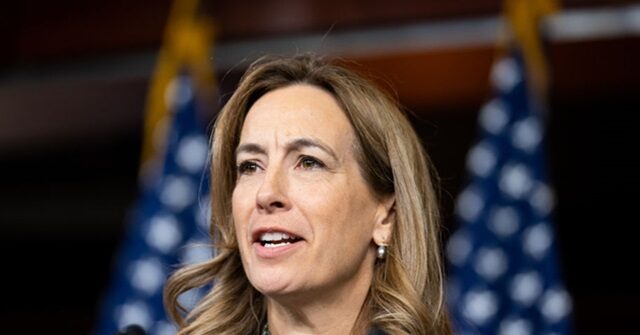On a recent episode of MSNBC’s “Alex Wagner Tonight,” Rep. Mikie Sherrill from New Jersey expressed concerns regarding the White House’s awareness of drone sightings and the operational communication among various government agencies. Sherrill, alongside Rep. Pat Ryan from New York, highlighted instances where they provided crucial information about drone activity in military bases located within their districts. Notably, they both emphasized their status as military veterans, which underscores their focus on national security matters. Unfortunately, Sherrill noted that the communication between Congress and the White House appears to be lacking, as there seemed to be a disconnect regarding information they had previously shared. This raises questions about the effectiveness of information dissemination from the government to local law enforcement agencies, which reportedly continue to experience gaps in available data.
Sherrill articulated her frustrations during a recent briefing, underscoring the ongoing issues with the communication channels that are supposed to facilitate the flow of pertinent information. The lawmakers were left with the impression that the White House was not fully informed about significant details relevant to national security that they had previously communicated. This disconnection is concerning for Sherrill, particularly since it impacts the ability of law enforcement officials on the ground to respond effectively to drone sightings. She expressed her belief that the government has yet to efficiently consolidate all collected information and convey it to the necessary authorities, further complicating matters at a local level.
Additionally, Sherrill acknowledged improvements in public communication regarding drone activity but maintained that there remains significant work to be done. While she noted the advent of new radar systems as a positive development, the need for improved briefings and communication remains urgent. Sherrill is advocating for the establishment of a dedicated agency responsible for coordinating interagency efforts related to drone activity and national security. Her advocacy stems from a desire to create a more cohesive strategy that not only addresses current issues but puts in place a framework for future incidents involving drones.
Despite feeling more informed following recent briefings, Sherrill remains concerned about the overall lack of clarity regarding drone sightings. She emphasized the importance of understanding whether reported sightings can be accurately categorized as law enforcement drones, hobbyist drones, or aircraft that would normally be expected in the airspace. This ambiguity complicates the situation and presents potential risks that must be addressed promptly. Sherrill’s commitment to resolving these challenges is evident, as she continues to pursue clarity and effective communication at all levels of government.
One of the key points raised by Sherrill is the prolonged period it has taken to reach the current stage of understanding and operational readiness regarding drone matters. She expressed frustration that it has taken too long to establish adequate communication and to gather sufficient intelligence to provide local law enforcement with the information they need to act decisively. This delay highlights systemic issues within the federal response mechanisms that may impede security efforts. The urgency for improvement is palpable, especially as the drone landscape evolves, posing new national security challenges.
In summary, Rep. Mikie Sherrill’s comments on MSNBC reflect critical concerns regarding communication gaps at various levels of government concerning drone activity, particularly around military installations. Both she and her colleague Rep. Pat Ryan believe that enhanced awareness and coordination between the White House and Congress are essential. While some progress has been made, especially with new radar technology, there remains a pressing need for dedicated agency oversight and improved communication processes. Addressing these challenges urgently is not only vital for national security but also for ensuring that local law enforcement is equipped with the information necessary to effectively respond to emerging threats posed by unregulated drone activity.

